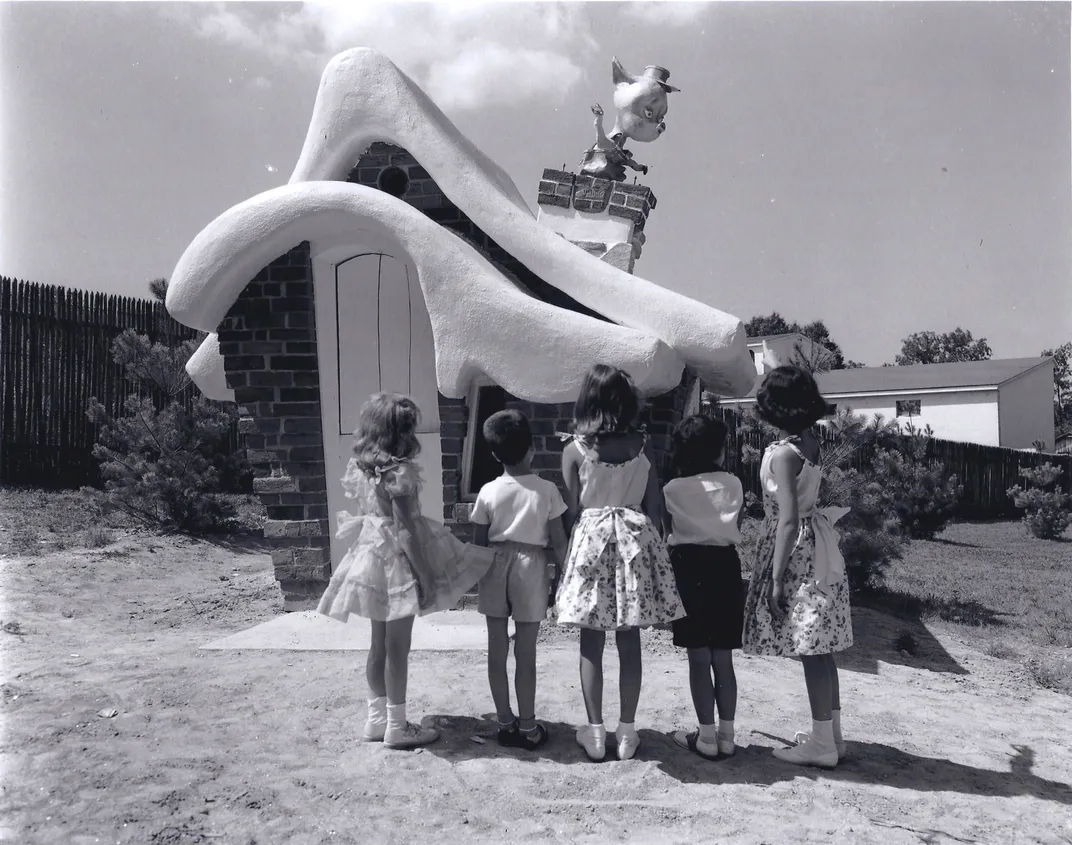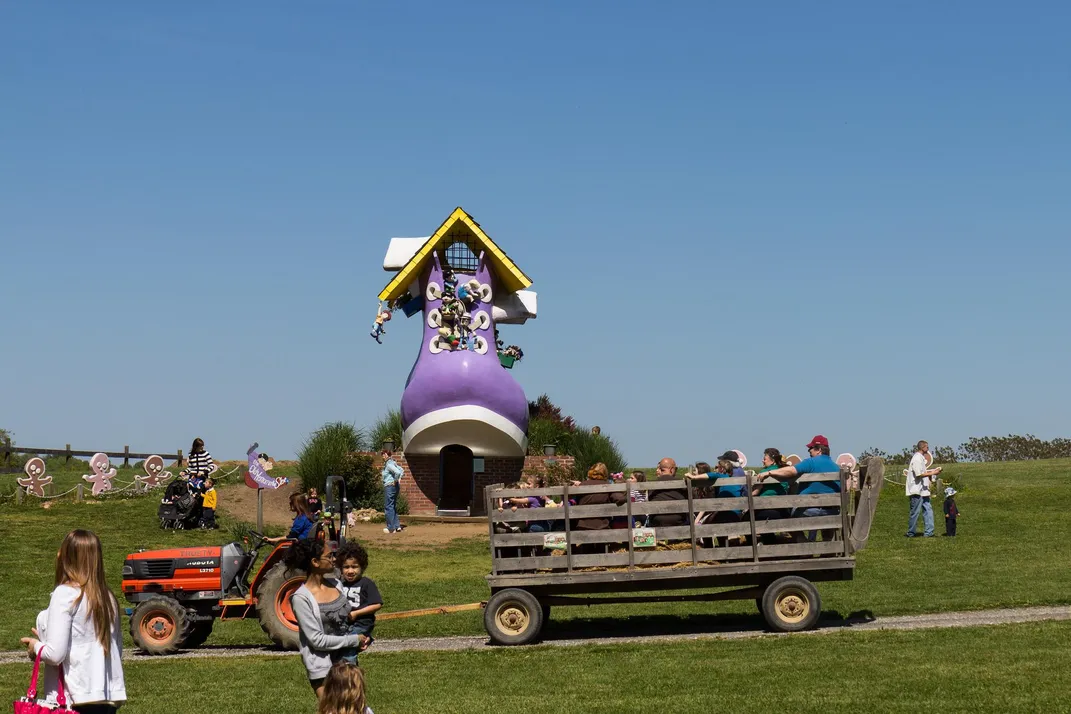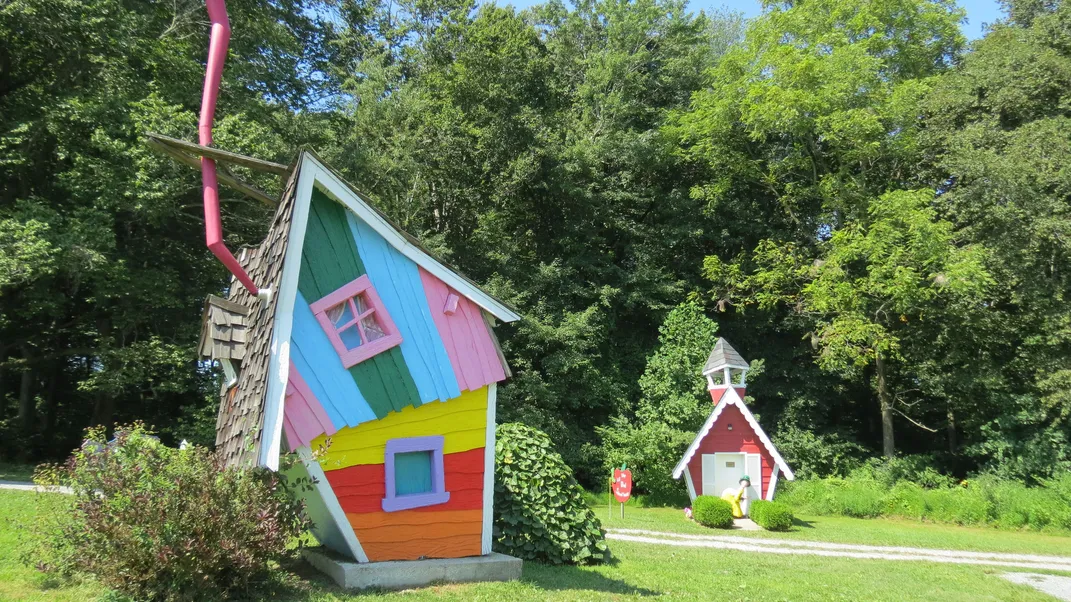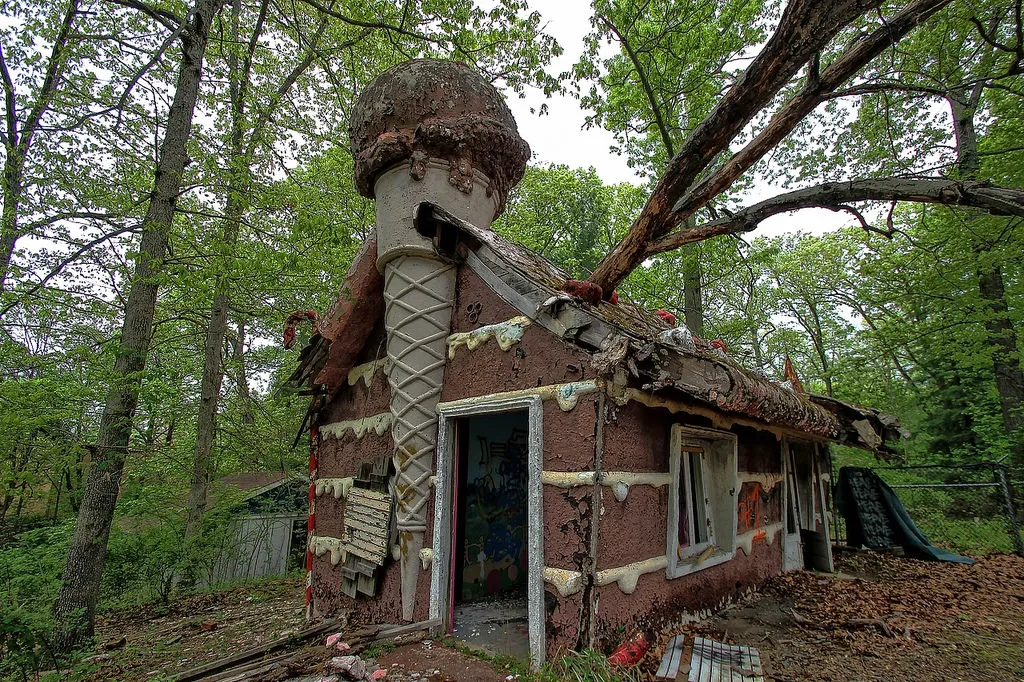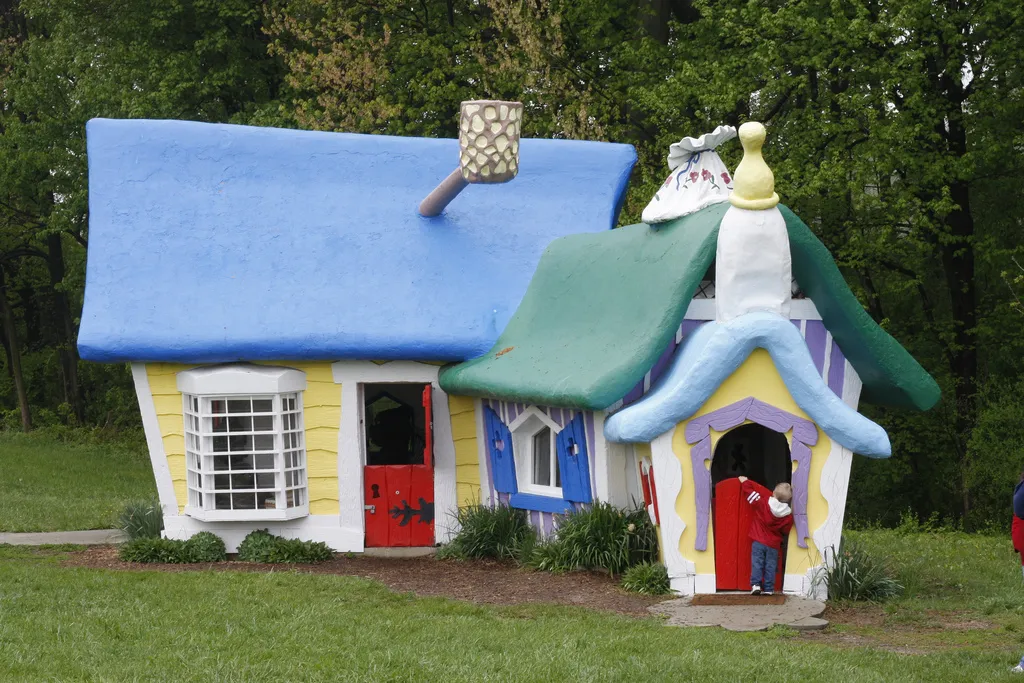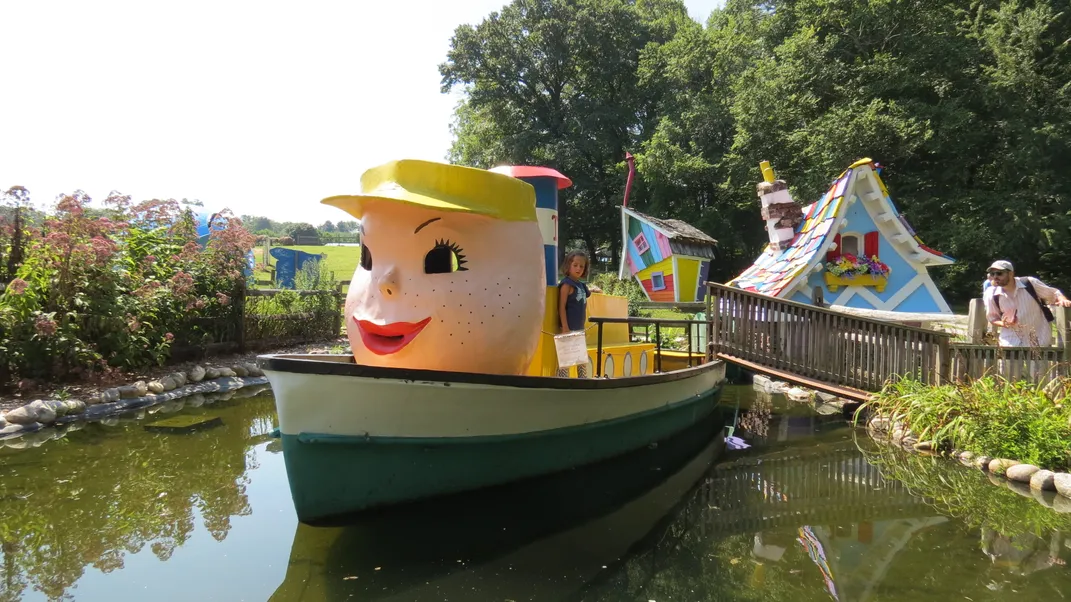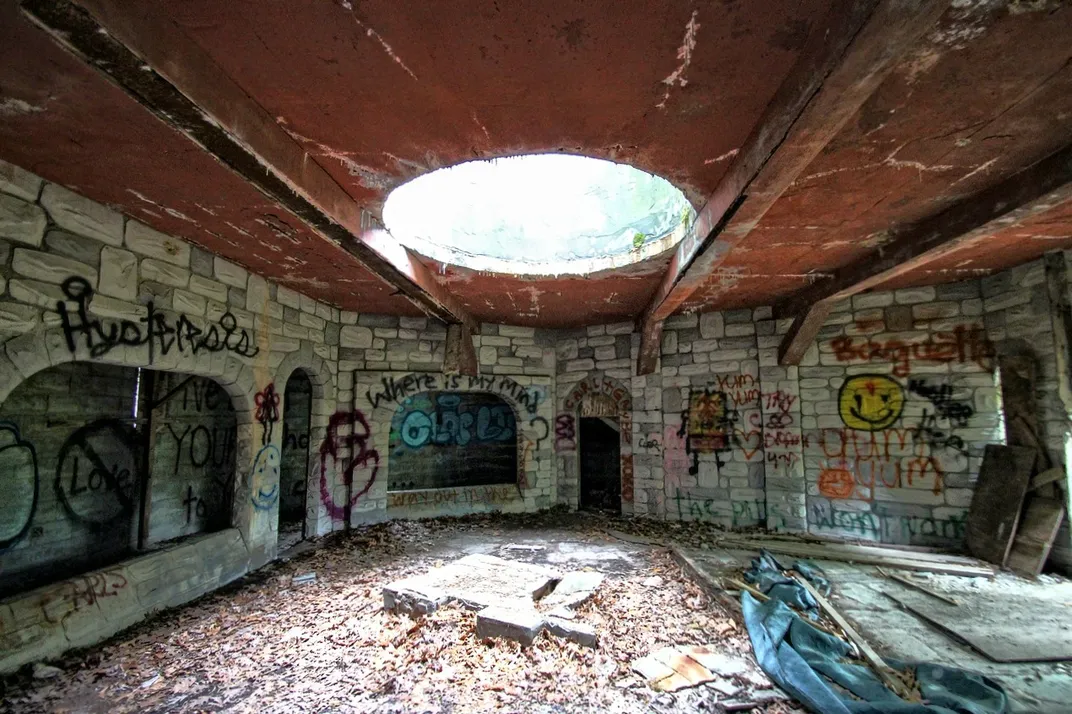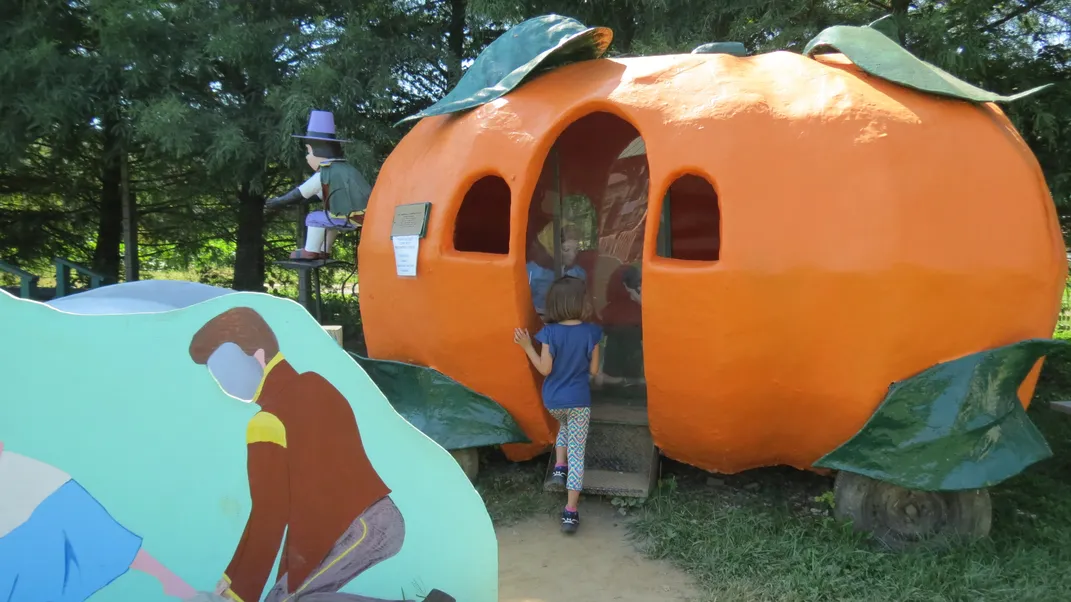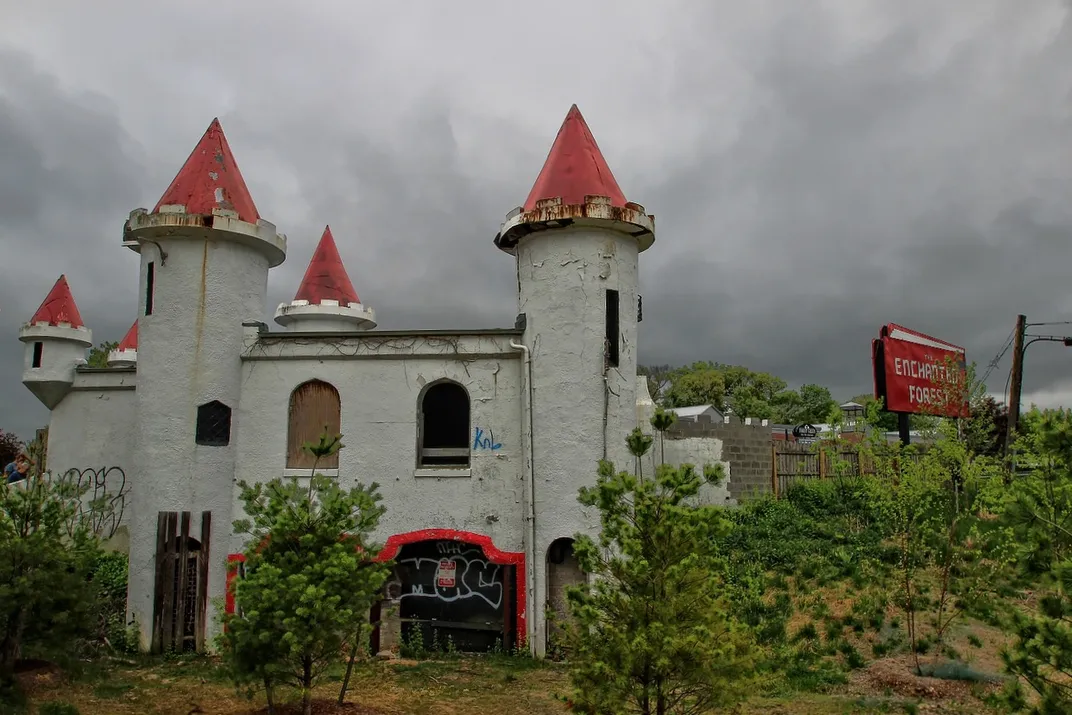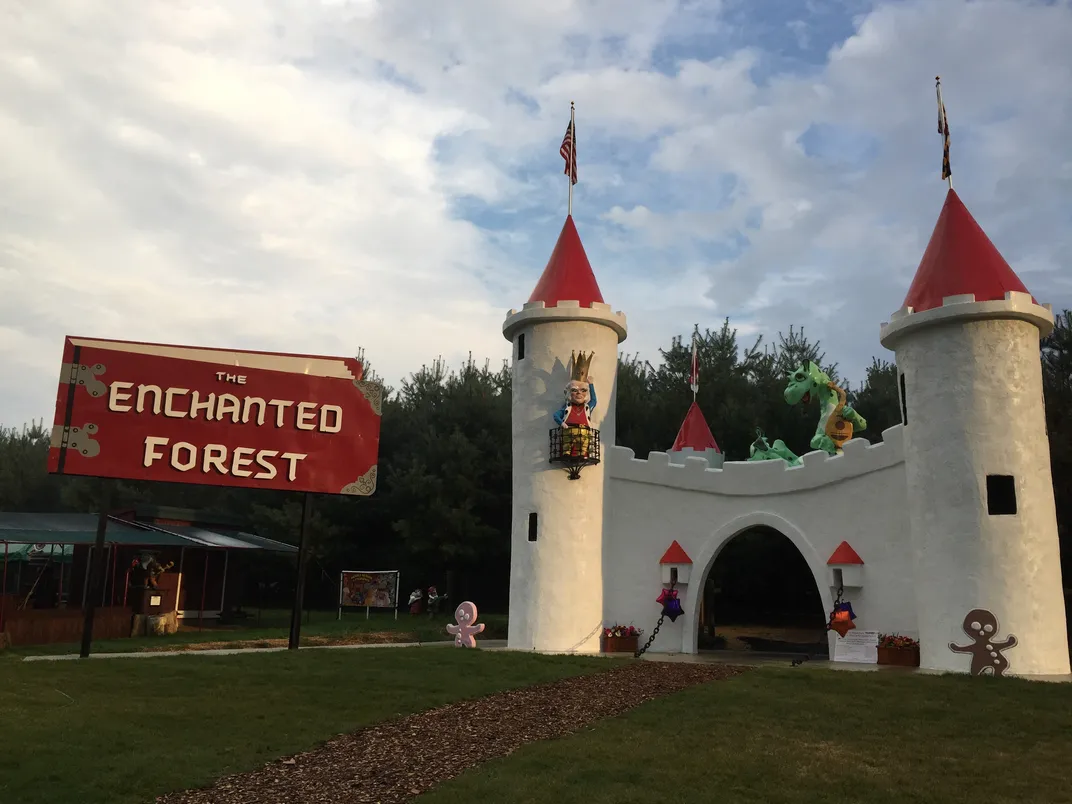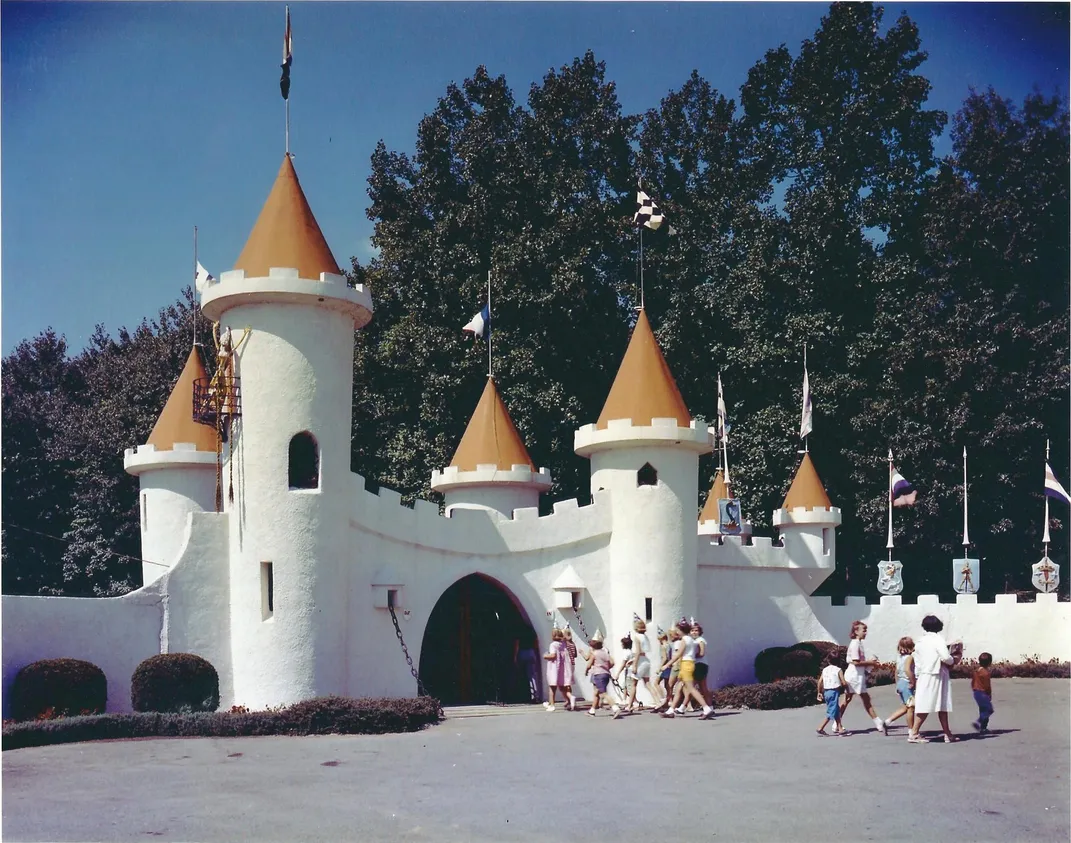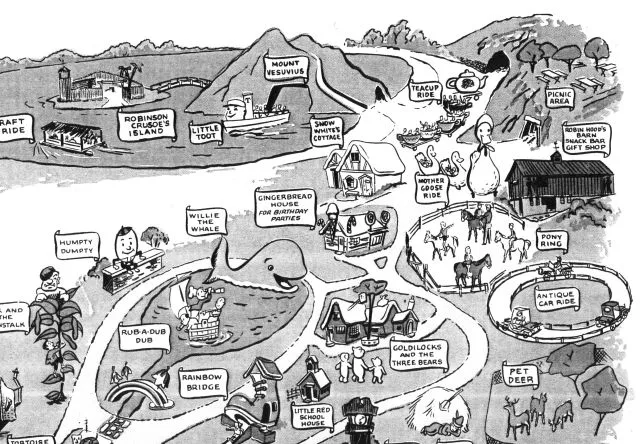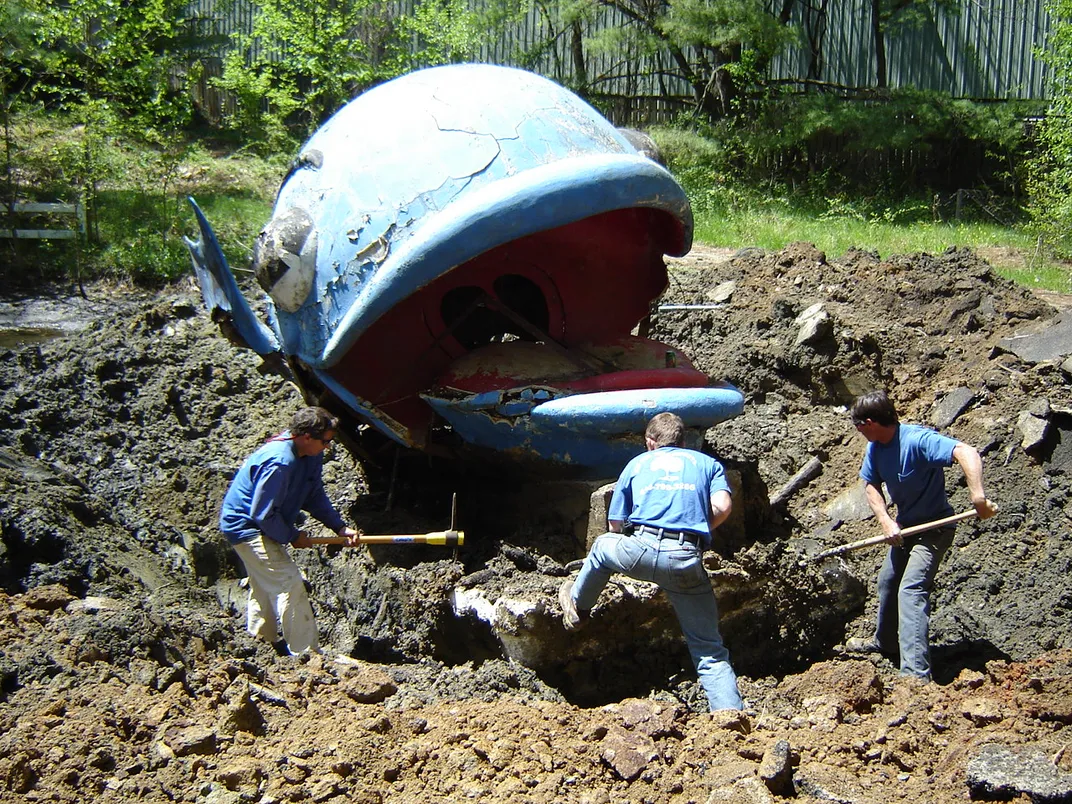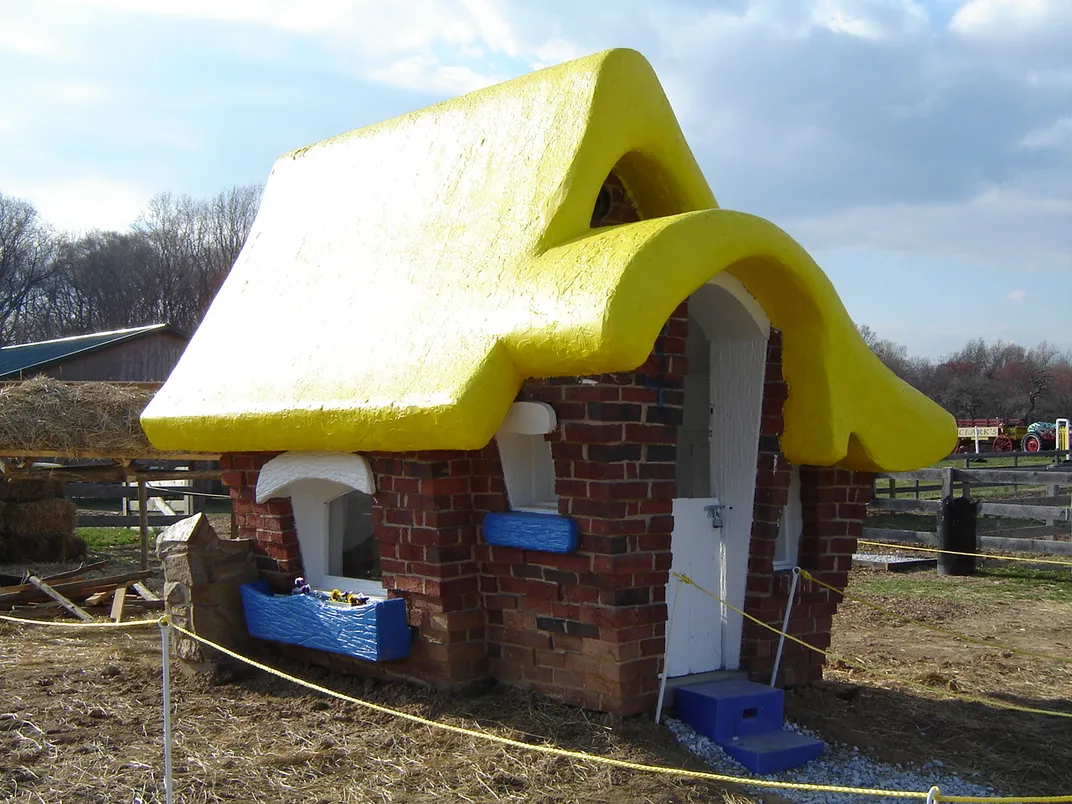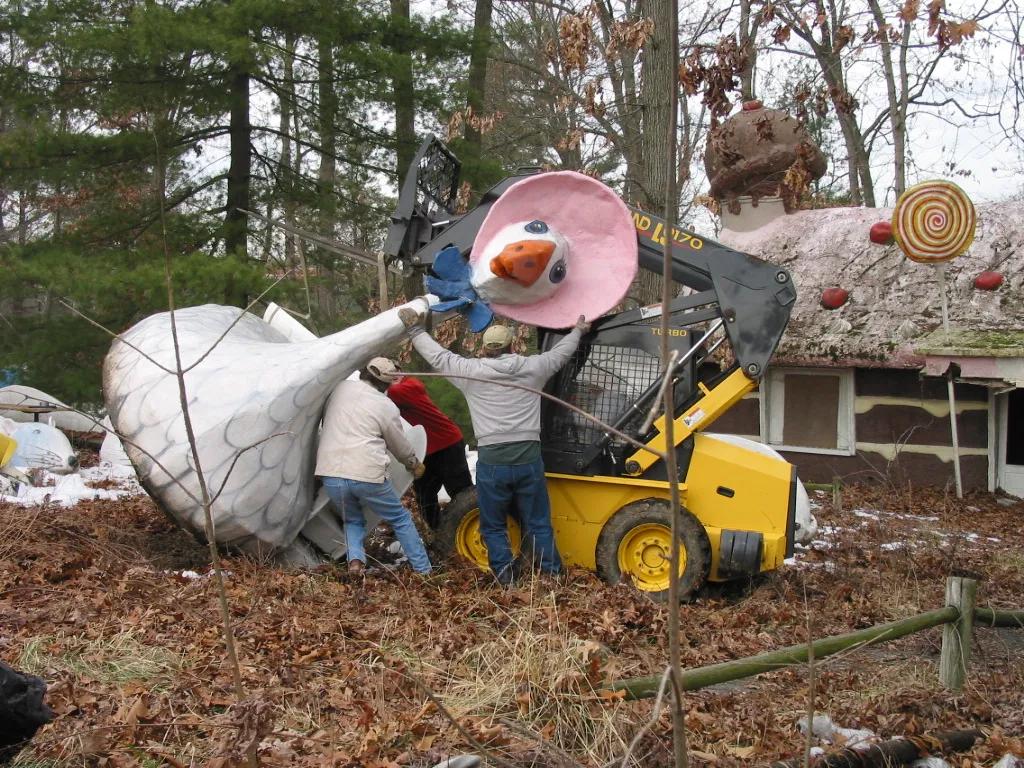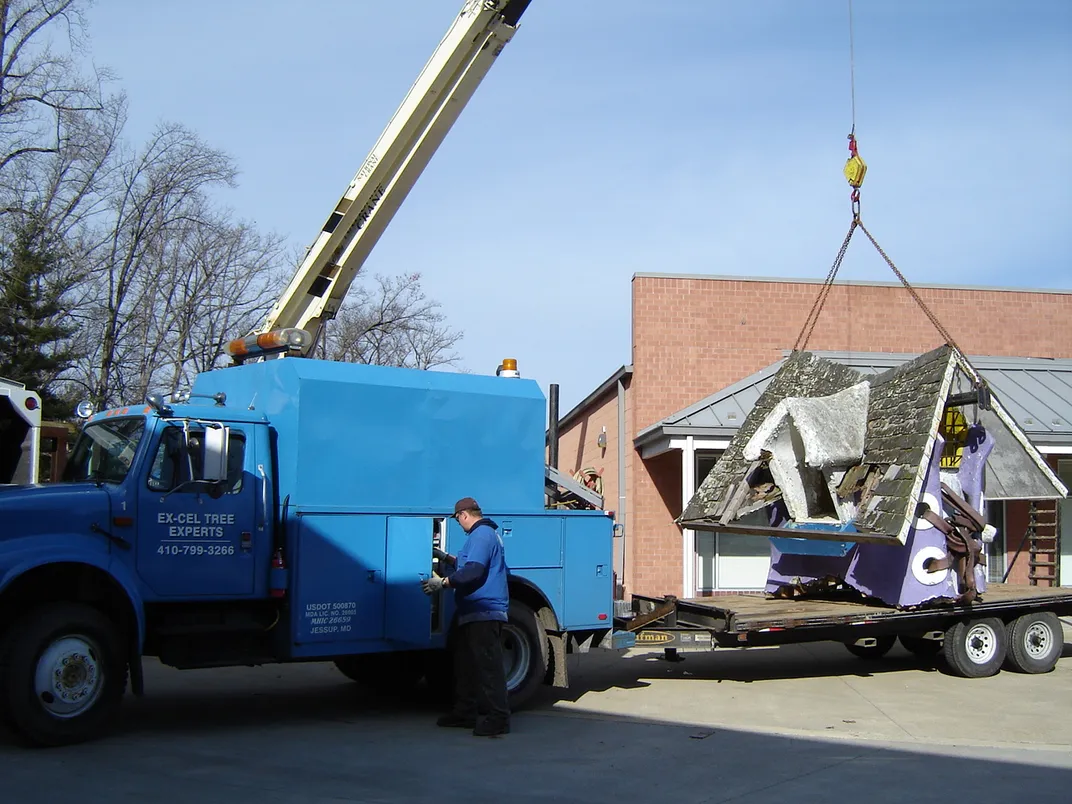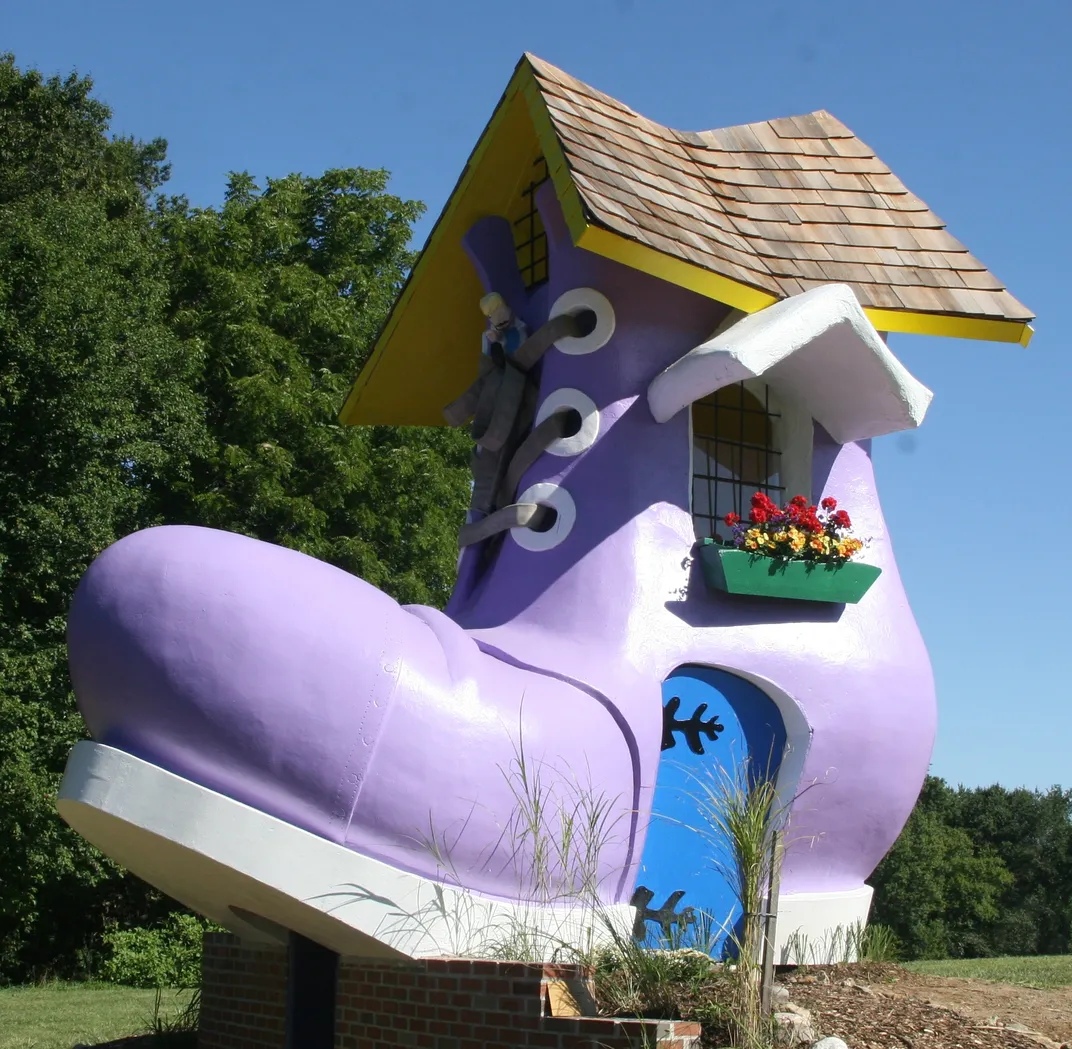The Abandoned Theme Park That Finally Got a Storybook Ending
This Maryland amusement park was once an East Coast version of Disneyland and was left for dead until one woman rescued it
Once upon a time in a forest west of Baltimore there lived Mother Goose, Little Red Riding Hood, Willie the Whale and many others from the land of make-believe. For over 30 years, they brought joy to countless kids from across the Eastern Seaboard. Soon, though, time took its toll. The children stopped coming and the characters were abandoned, left to rot away behind a shopping center. But just when all hope seemed lost, a fairy godmother swooped in. With the help of her fellow villagers and several large cranes, she brought the Enchanted Forest back to life.
The Enchanted Forest amusement park in Ellicott City, Maryland, opened on August 15, 1955, almost a month after Disneyland. The brainchild of former motor court operator Howard Harrison, the park was themed around familiar nursery rhymes and fairytales, with attractions including slides, animated characters, boat rides, walk-through houses, antique cars and a petting zoo. According to historian Jim Futrell of the National Amusement Park Historical Association, it was one of the first theme parks on the East Coast.
The American family entertainment industry took off in the 1950s with the ending of World War II and the presence of a newly prosperous economy and a growing middle class. Amusement and theme parks were well-suited for entertaining families who had a little extra money to spend. “Smart entrepreneurs of that time saw the GIs come home and start families. Just like Disney, [Harrison] thought of what he could do to entertain these families. So, he built a fairytale land,” says Martha Clark, co-author of The Enchanted Forest: Memories of Maryland’s Storybook Park and the owner of Clark’s Elioak Farm, which is now the new home of the Enchanted Forest.
From 1955 until 1989, the Enchanted Forest gave life to the imagination of the Baby Boomer generation. More than 20 acres of brightly colored concrete structures, rides and characters filled the park and its visitors with joy. While there were no mechanical rides on opening day (Clark said he wanted kids to focus on "the make-believe figures that are before their eyes"), over the years the park added rides such as a rafting trip to Robinson Crusoe’s Island, a journey in a teacup through the world of Alice and Wonderland and a Jeep safari into “Jungleland.” For many of those years, the park was a major tourist attraction in the mid-Atlantic region.
The Enchanted Forest also opened its doors to everyone, no matter what race, unlike other family fun parks of its era. At a time when schools in rural Howard County (where the park was located) were segregated, this theme park welcomed all.
As the years progressed, however, the Enchanted Forest began to lose the competition for kids’ attention—mainly to television, the golden age of video arcades and larger amusement parks such as Kings Dominion in Virginia, which opened in 1975, and Hershey Park in Pennsylvania, which expanded in the late 1970s and '80s. Despite nearly 400,000 visitors a year, the Enchanted Forest couldn’t keep up. In 1987, the Harrison family sold the park and the surrounding land to a shopping center developer for a reported $4.5 million.
At first, the developer promised to keep the park open, and they did reopen in 1990 for about a year, but it wasn't the same. “They decommissioned the rides and downsized [the park] … they were always going to make it smaller, lesser version of what the Enchanted Forest was,” says Clark. By the early 1990s, the park was completely shut down, left to fade away in the overgrown forest as the Enchanted Forest shopping center was built around it.
Over the next decade, it became the kind of place that urban explorers dream about—an abandoned, decrepit theme park. In 2004, a charity auction and subsequent Baltimore Sun article brought the preservation of Enchanted Forest back into the public eye. That’s when Martha Clark stepped in.
Clark grew up on a dairy farm just a few miles down the road from the Enchanted Forest in Ellicott City, where she still lives today. Like many kids, she loved the time she spent at the Enchanted Forest. “I always wanted to have my birthday party there, but mine is in December, so I never got to do that," she laughs.
Clark's family has been part of the fabric of the community for 250 years, she says, with her ancestors helping to settle Ellicott City and her father serving as a state senator. Clark herself is a former director of the Howard County Historical Society and currently sits on the board of directors for Preservation Howard County.
In the summer of 2004, she acquired the Enchanted Forest’s orange Cinderella pumpkin and put it on her farm. Her hope was simply to preserve the artifact and show off an important piece of her hometown’s history. But the pumpkin was a huge hit with parents and kids, so she went back to the shopping center management company to ask if she could have more pieces. They told her yes, as long as she took everything. “In my marvelous naiveté, I said sure … and so the adventure began,” remembers Clark.
The removal of the Enchanted Forest pieces, which began in earnest that winter, proved more difficult than Clark had anticipated. Many of the buildings and structures were extraordinarily heavy: for example, the Old Woman's Shoe (which was a slide) weighed nearly 30,000 pounds and stood over 20 feet tall. The pieces were also in rough shape, with many crumbling and cracking. “They wouldn’t have lasted much longer … If I had started this now, instead of 11 years ago, we wouldn’t have been able to save half of the structures,” notes Clark.
It took Clark over a decade and, she estimates, nearly half-a-million dollars, but every single piece left in the forest—more than 100, all told—was brought over to her farm. The last pieces, including the iconic dragon and castle, were finally moved this past spring.
On August 15, the Enchanted Forest celebrated its 60th anniversary with cake, music, a ribbon cutting and an employee reunion. Clark's Elioak Farm will continue to celebrate the Enchanted Forest anniversary throughout their season, which ends in early November. Of course, Clark plans on making sure the pieces of the Enchanted Forest that she’s rescued will be around much longer than that. She says wants to keep them looking great for “the next millennium,” and hopes “that this will become a place where families who are coming now will bring the next generation too.”
Planning Your Next Trip?
Explore great travel deals
Smithsonian magazine participates in affiliate link advertising programs. If you purchase an item through these links, we receive a commission.
